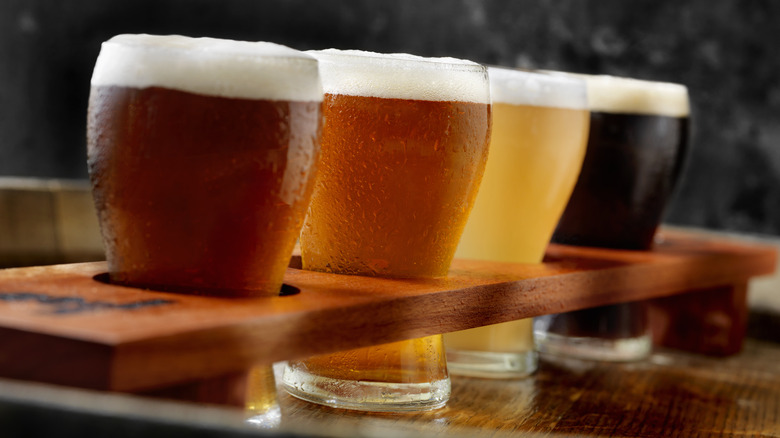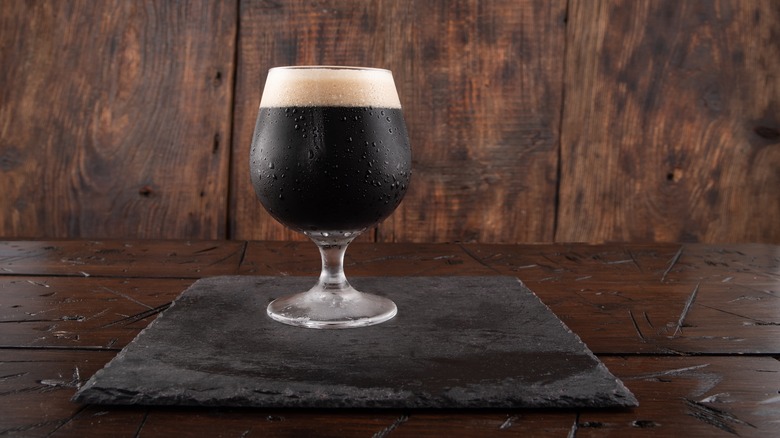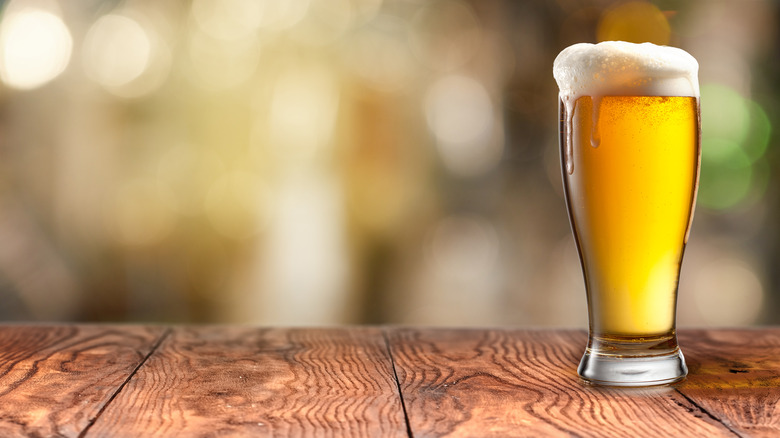The Misunderstood Difference Between Light And Dark Beer
There are so many types of beer out there that making a choice can be a little overwhelming. To get a sense of what you like, it helps to start by dividing beers into their two most basic groups: Light and dark. Light beers encompass a range of colors from pale straw to light amber, while dark beers can range from medium amber to nearly opaque black. Light beers typically have subtler flavors, while dark beers are more bold and complex. Unfortunately, the differences between these types of beer have been obscured by the rise in "lite" beer, which has different connotations.
On beer labels, the words "light" and "lite" indicate a low-calorie beer, and since most of the calories in beer come from its alcohol content, these beers are typically lower in alcohol, too. This type of beer is the best-selling style in the United States, so it's understandable that our minds should go there whenever we hear the phrase "light beer," but not all beers with a pale color fit this low-calorie, low-alcohol description. Furthermore, some dark beers have fewer calories than their paler counterparts. The real difference between light and dark beers lies in their ingredients, brewing process, and flavor.
What is dark beer?
There are four core ingredients that every beer is based on: Water, yeast, hops, and grains. The grain is what determines a particular beer's color. Most beers are made primarily from barley, with additional grains added in smaller amounts for flavor, and dark beers have a higher percentage of barley in them than light beers. The color is also influenced by how long the grains are roasted. Just as there are dark and light roast coffee beans, the grains in beer can have a light-roast, medium-roast, dark-roast, or heavy-roast. Dark beers are made with dark or heavy-roasted grains.
Due to the long roasting time, dark beers tend to taste stronger than light beers. Many craft dark beers include additional ingredients that intensify the flavor, such as nuts, coffee, or chocolate. Popular styles of dark beer include dark ale, dark lager, stout, porter, and dunkel, the latter of which literally means "dark" in German.
What is light beer?
Light beers are basically the opposite of dark beers because they typically have a lower percentage of barley, and the grain is only a light-to-medium roast. Another key defining factor in light beers is that they tend to have more hops than dark beers and are almost universally more bitter than dark beers. However, light beers generally have a milder flavor, so brewers often add additional ingredients to elevate the taste. While caramel, coffee, and chocolate flavors are common additions to dark beers, light beers are commonly accentuated with fruit and floral flavors.
Common styles of light beer include most IPAs, kölsches, and pilsners, the latter being the most popular style of beer in the world. While some of these may fit the lower-calorie definition that we tend to associate with light beer, many of them don't. A 2023 report from the Daily Mail found that pints of BrewDog Punk IPA (292 calories), San Miguel (256 calories), and Kronenbourg (244 calories), all of which are light-colored beers, had significantly more calories than a pint of Guinness (210 calories), which is arguably the most famous dark beer in the world. So, don't try to judge a beer's calories by its color, and try to think of the shade from the standpoint of flavor.


